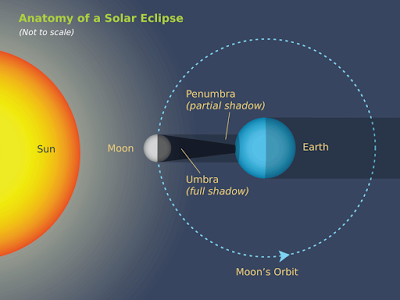A total eclipse of the Sun will be visible from parts of Chile and Argentina as well parts of the South Pacific and South Atlantic on Monday 14 December 2020, with a partial eclipse visible from other parts of those countries, as well as Uruguay, Paraguay, Bolivia. most of Peru and Ecuador, and the southern half fo Brazil, as well as the Falkland Islands, parts of Antarctica, and much of the South Pacific and South Atlantic. The event will occur between 1.33 pm and 6.53 pm GMT.
Eclipses are a product of the way the Earth, Moon and Sun move about one-another. The Moon orbits the Earth every 28 days, while the Earth orbits the Sun every 365 days, and because the two Sun and Moon appear roughly the same size when seen from Earth, it is quite possible for the Moon to block out the light of the Sun. At first sight this would seem likely to happen every month at the New Moon, when the Moon is on the same side of the Earth as the Sun, and therefore invisible (the Moon produced no light of its own, when we see the Moon we are seeing reflected sunlight, but this can only happen when we can see parts of the Moon illuminated by the Sun).
However the Moon does not orbit in quite the same plane as the Earth orbits the Sun, so the Eclipses only occur when the two orbital planes cross one-another; this typically happens two or three times a year, and always at the New Moon. During Total Eclipses the Moon entirely blocks the light of the Sun, however most Eclipses are Partial, the Moon only partially blocks the light of the Sun.
See also...










